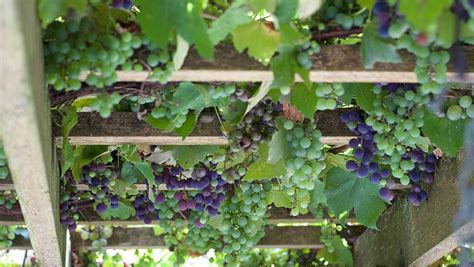How To Plant Grapes: A Comprehensive Guide for Beginners
Planting grapevines can be a rewarding experience, leading to years of delicious homegrown fruit. This comprehensive guide will walk you through the process, from selecting the right variety to harvesting your first crop. Whether you're a seasoned gardener or a complete novice, this step-by-step approach will ensure success.
Choosing the Right Grape Variety
The first step to successfully planting grapes is selecting a variety suitable for your climate and growing conditions. Consider these factors:
- Hardiness: Choose a variety that can withstand the coldest winter temperatures in your region. Local nurseries can provide valuable advice on varieties best suited to your area.
- Disease Resistance: Opt for disease-resistant varieties to minimize the need for chemical treatments. Many modern cultivars boast excellent resistance to common grape diseases.
- Ripening Time: Select a variety with a ripening time that aligns with your growing season. Early-season varieties are ideal for shorter growing seasons, while late-season varieties need longer, warmer periods to fully ripen.
- Space Requirements: Consider the mature size of the grapevine when choosing a planting location. Some varieties grow significantly larger than others.
Preparing the Planting Site
Proper site preparation is crucial for healthy grapevine growth. Here's what you need to do:
- Sunlight: Grapes need at least six to eight hours of direct sunlight per day. Choose a sunny location, preferably facing south in the Northern Hemisphere.
- Soil Drainage: Well-drained soil is essential. Grapes don't tolerate wet feet. Amend heavy clay soils with organic matter to improve drainage.
- Soil pH: The ideal soil pH for grapes is slightly acidic, between 6.0 and 6.5. You can test your soil pH using a home testing kit and amend accordingly if necessary.
- Spacing: Allow sufficient space between vines, depending on the variety. Check the variety's specific requirements; usually, spacing ranges from 6 to 10 feet apart.
Planting Your Grapevines
Once your site is prepared, it's time to plant:
- Planting Time: The best time to plant grapevines is in the dormant season, typically late winter or early spring, before new growth begins.
- Digging the Hole: Dig a hole twice as wide and as deep as the root ball of your grapevine.
- Planting the Vine: Gently remove the grapevine from its container, loosen the roots, and place it in the hole. Ensure the graft union (the point where the scion and rootstock meet) is above the soil line.
- Backfilling: Fill the hole with soil, gently firming it around the roots.
- Watering: Water thoroughly after planting to settle the soil.
Ongoing Care and Maintenance
After planting, consistent care is vital for healthy grapevines:
- Watering: Water regularly, especially during dry periods. Deep, infrequent watering is better than shallow, frequent watering.
- Fertilizing: Feed your vines annually with a balanced fertilizer appropriate for grapes. Follow package instructions for application rates.
- Pruning: Regular pruning is essential to maintain shape, encourage fruit production, and prevent disease. Learn the proper pruning techniques for your grape variety. This is crucial for maximizing yield and fruit quality.
- Pest and Disease Control: Monitor your vines regularly for pests and diseases. Take prompt action if any problems are detected.
Harvesting Your Grapes
The time to harvest your grapes depends on the variety and the growing season. Grapes are ready for harvest when they've reached full ripeness, exhibiting their characteristic color and flavor.
By following these steps, you'll be well on your way to enjoying the fruits of your labor – literally! Remember, patience is key. It may take a few years before your grapevines produce a significant harvest, but the sweet reward is well worth the wait. Happy growing!
